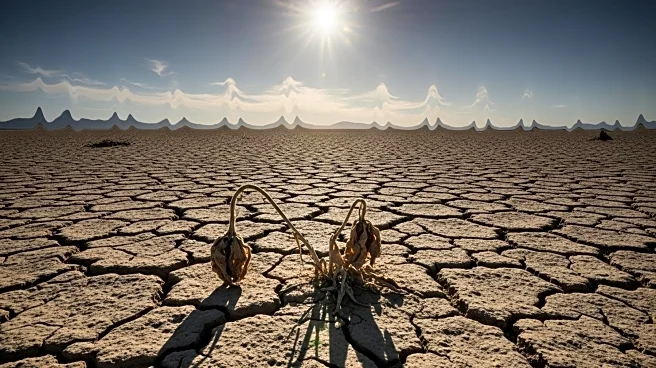What's Happening?
A recent study published in Water Resources Research has examined the environmental impacts of lithium extraction methods, focusing on closed-basin lithium brine systems. The research highlights that the extraction of fresh groundwater poses a greater threat to groundwater-dependent ecosystems than brine abstraction. As the demand for lithium increases due to its use in electric vehicles and renewable energy storage, the sustainability of mining practices has become a critical concern. Traditional methods involve evaporation techniques that consume both brine and freshwater, leading to water scarcity and threatening wetlands. Emerging direct lithium extraction (DLE) technologies offer alternatives but may require more freshwater, presenting new sustainability challenges. The study utilized hydrogeologic modeling and remote sensing data to assess the impacts of different abstraction strategies on ecosystems, finding that freshwater abstraction significantly reduces groundwater discharge to wetlands compared to brine abstraction.
Why It's Important?
The findings of this study are significant for the lithium mining industry, particularly in regions like the 'Lithium Triangle' of South America. The research underscores the need for sustainable mining practices that prioritize minimizing freshwater consumption to protect sensitive ecosystems. Freshwater abstraction has been identified as the dominant driver of ecological decline in groundwater-fed wetlands, which could lead to geopolitical tensions over resource management. By differentiating between brine and freshwater impacts, mining companies and policymakers can adopt strategies that balance economic goals with environmental protection. This study challenges traditional water footprint assessments and suggests that strategic placement of abstraction wells can mitigate ecological harm, offering insights for reshaping mining policies and technologies.
What's Next?
Future directions for research and policy include developing predictive models that capture variable-density flow dynamics and monitoring ecological responses over time to refine impact assessments. These efforts aim to ensure that the growing demand for lithium does not compromise water resources or wetland ecosystems. The study provides a foundation for informed decision-making in mining operations, emphasizing the importance of integrating hydrogeologic modeling into planning to support sustainable practices. As the industry evolves, stakeholders may need to consider new technologies and policies that prioritize environmental sustainability while meeting economic demands.
Beyond the Headlines
The study's implications extend beyond immediate environmental concerns, touching on ethical and geopolitical dimensions. The need to balance resource extraction with ecosystem protection raises questions about the ethical responsibilities of mining companies and governments in managing natural resources. Additionally, the potential for geopolitical tensions over water resources in lithium-rich regions highlights the importance of international cooperation and policy frameworks that address environmental sustainability. Long-term shifts in mining practices could lead to technological innovations that reduce ecological impacts, fostering a more sustainable approach to resource management.










